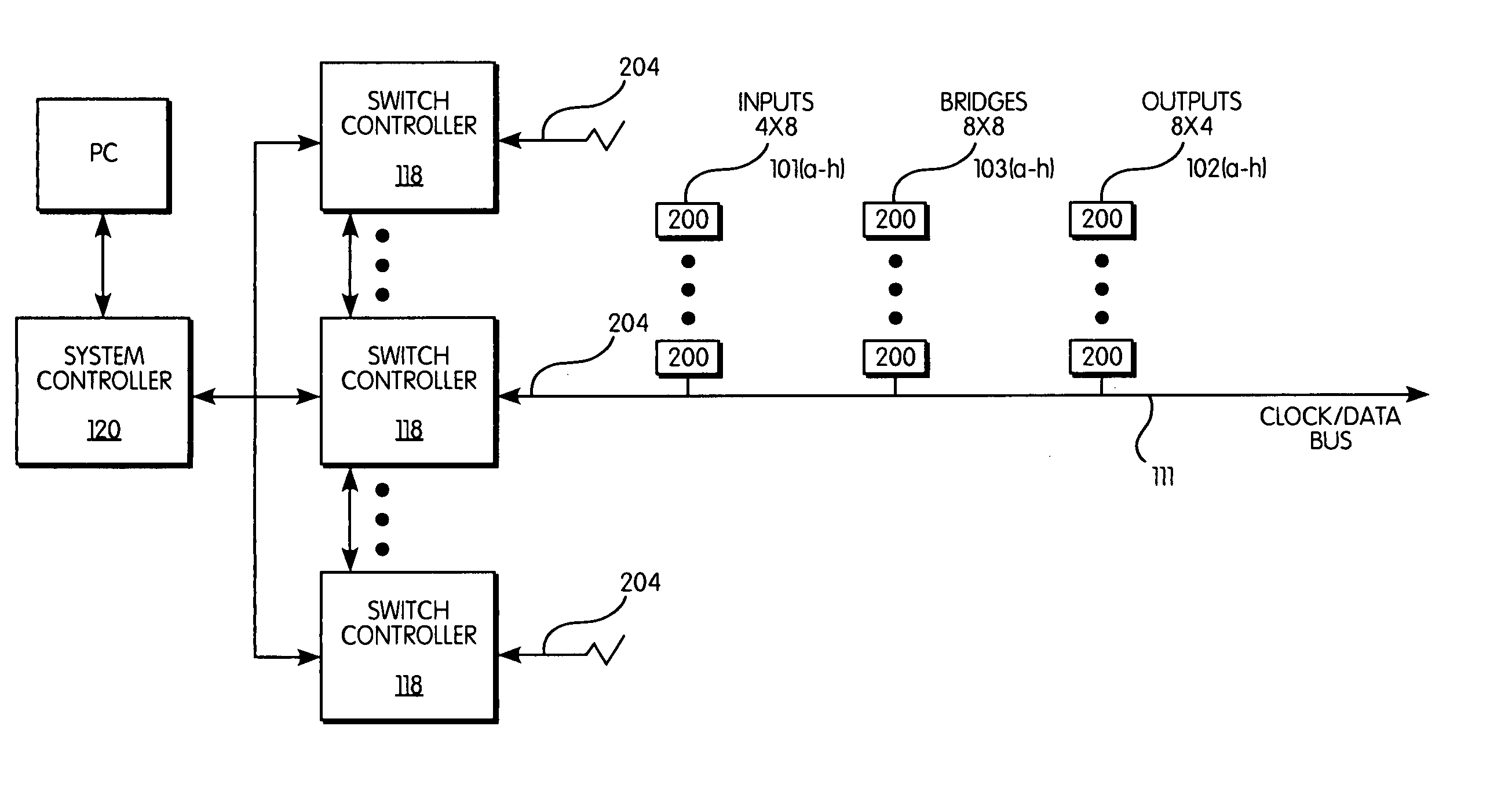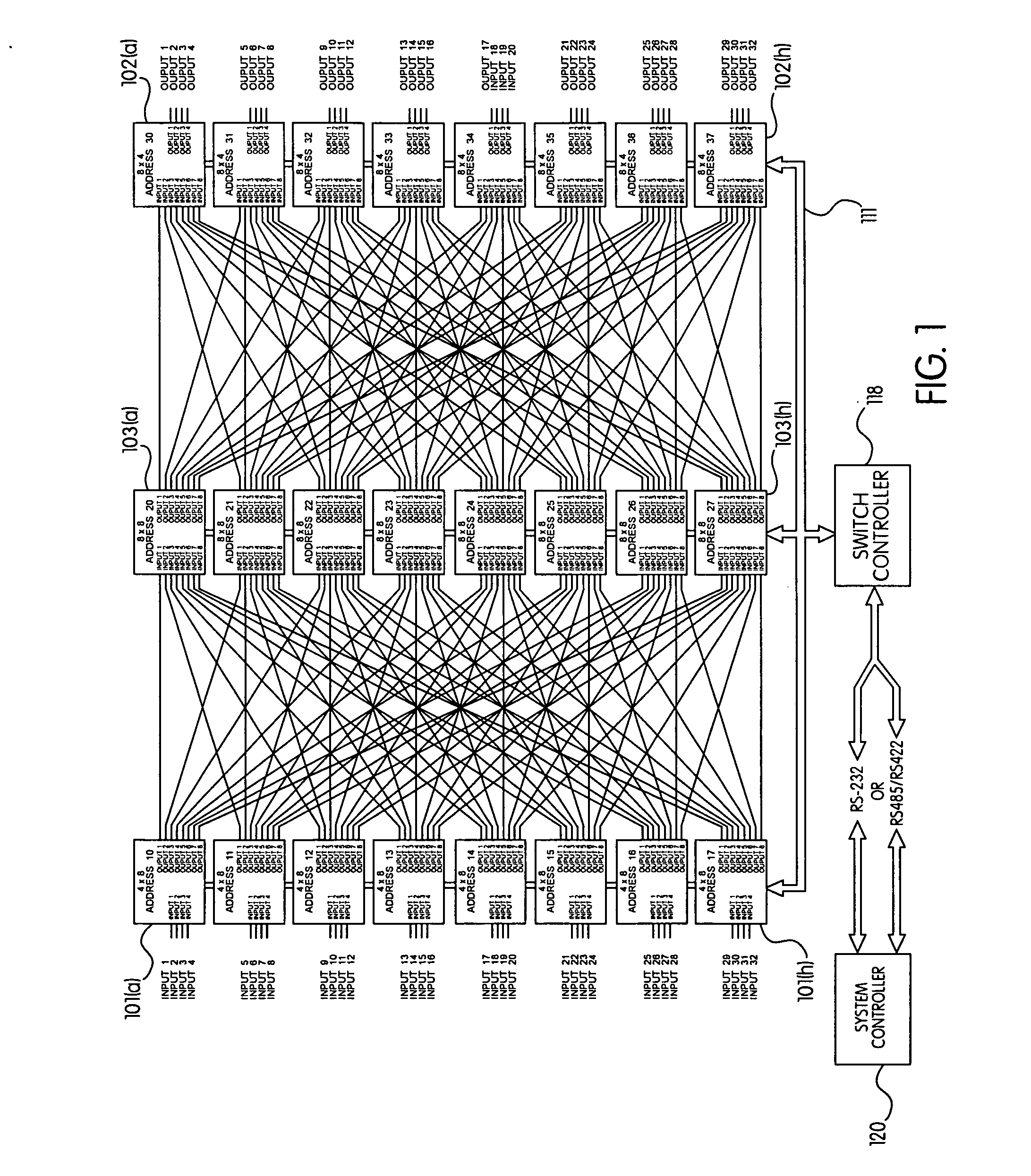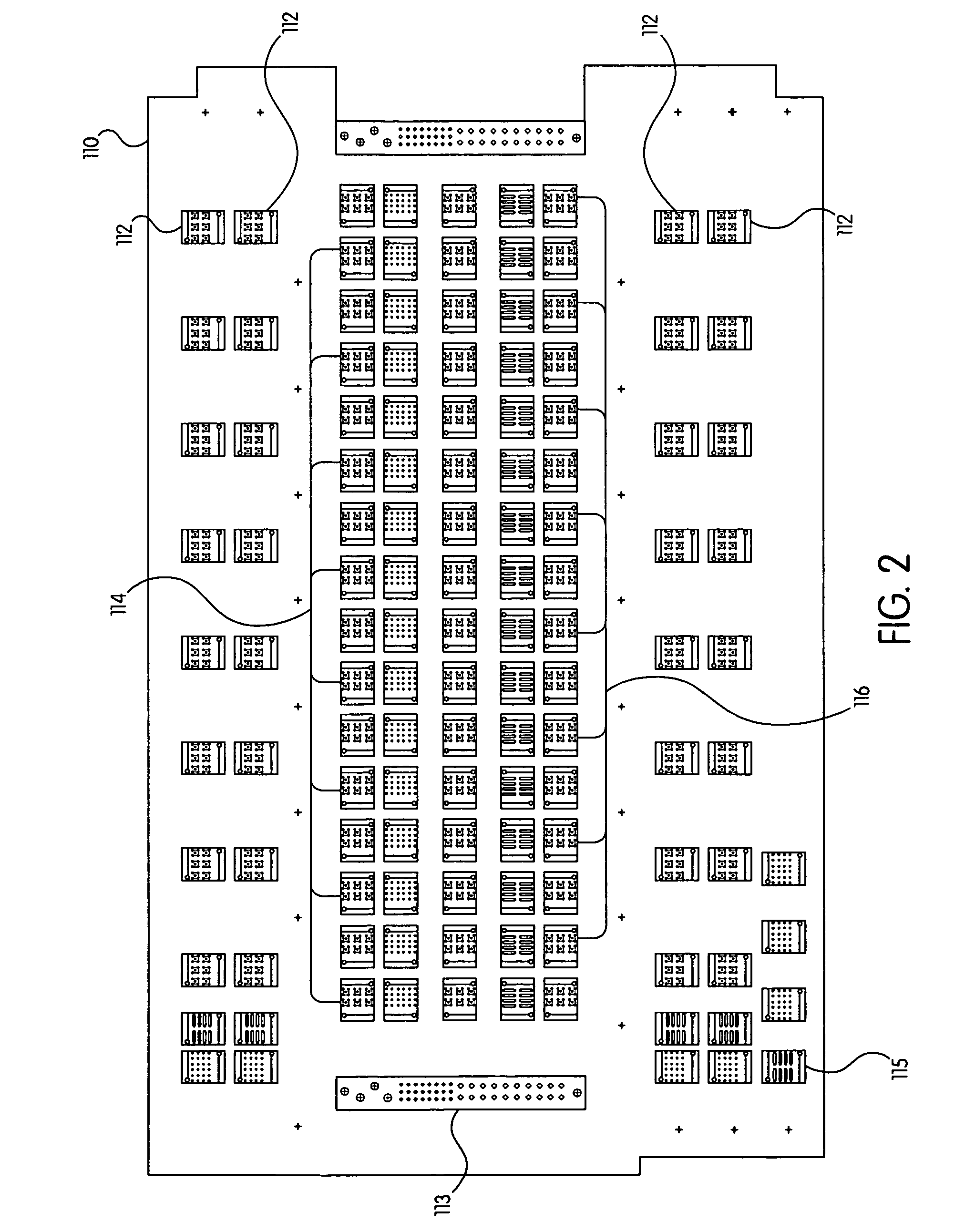Modular broadband bi-directional programmable switch with hot-swappable modules
a module and module technology, applied in the field of modular switching apparatus, can solve the problems of preventing the repair of failed modules, complicated construction of switches disclosed in singers, and affecting the operation of electrical signals, so as to minimize signal loss and minimize trace length
- Summary
- Abstract
- Description
- Claims
- Application Information
AI Technical Summary
Benefits of technology
Problems solved by technology
Method used
Image
Examples
Embodiment Construction
[0019] The switch of the current invention solves problems with backplane complexity, number of boards, space required and internal cabling complexity by using a different type of matrix architecture than is known in the prior art in this area. The architecture, known as a Clos or 3-stage matrix, is non-standard in the RF switching art, but is known in the prior art in other segments of the electronics industry. The Clos architecture builds a large matrix from smaller submatrices in a multilayer format.
[0020] In the preferred embodiment of the invention, as shown in FIG. 1, there are eight input cards, each having a 4×8 matrix, four bridge cards, each having two 8×8 matrices and eight output cards, each having an 8×4 matrix, with standard splitter switch architecture. The eight input cards, four bridge cards and eight output cards are arranged in a three stage Clos matrix architecture to form a 32×32 switching matrix. The architecture requires only 128 connections between cards as ...
PUM
 Login to View More
Login to View More Abstract
Description
Claims
Application Information
 Login to View More
Login to View More - R&D
- Intellectual Property
- Life Sciences
- Materials
- Tech Scout
- Unparalleled Data Quality
- Higher Quality Content
- 60% Fewer Hallucinations
Browse by: Latest US Patents, China's latest patents, Technical Efficacy Thesaurus, Application Domain, Technology Topic, Popular Technical Reports.
© 2025 PatSnap. All rights reserved.Legal|Privacy policy|Modern Slavery Act Transparency Statement|Sitemap|About US| Contact US: help@patsnap.com



